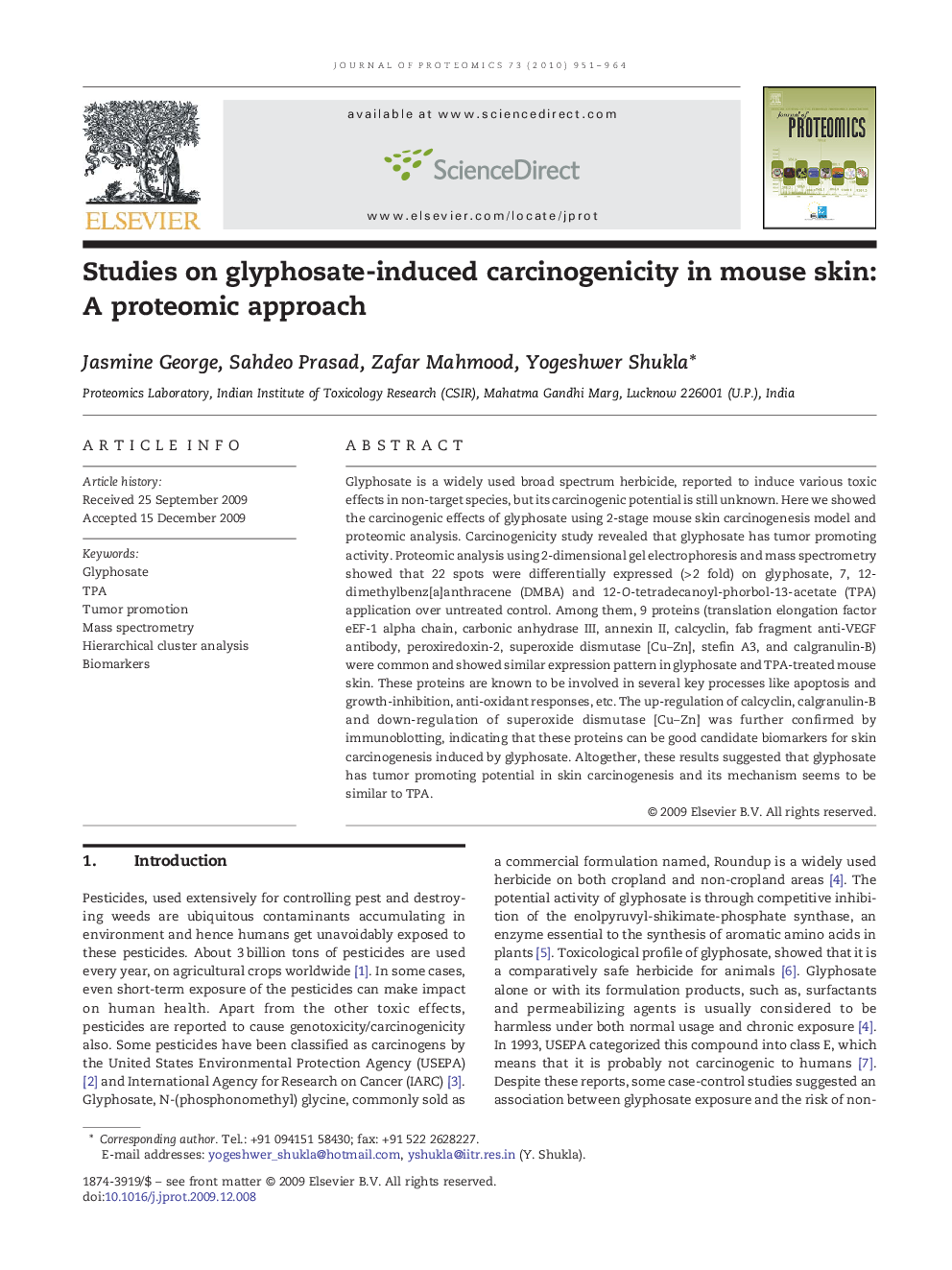| Article ID | Journal | Published Year | Pages | File Type |
|---|---|---|---|---|
| 1226162 | Journal of Proteomics | 2010 | 14 Pages |
Glyphosate is a widely used broad spectrum herbicide, reported to induce various toxic effects in non-target species, but its carcinogenic potential is still unknown. Here we showed the carcinogenic effects of glyphosate using 2-stage mouse skin carcinogenesis model and proteomic analysis. Carcinogenicity study revealed that glyphosate has tumor promoting activity. Proteomic analysis using 2-dimensional gel electrophoresis and mass spectrometry showed that 22 spots were differentially expressed (> 2 fold) on glyphosate, 7, 12-dimethylbenz[a]anthracene (DMBA) and 12-O-tetradecanoyl-phorbol-13-acetate (TPA) application over untreated control. Among them, 9 proteins (translation elongation factor eEF-1 alpha chain, carbonic anhydrase III, annexin II, calcyclin, fab fragment anti-VEGF antibody, peroxiredoxin-2, superoxide dismutase [Cu–Zn], stefin A3, and calgranulin-B) were common and showed similar expression pattern in glyphosate and TPA-treated mouse skin. These proteins are known to be involved in several key processes like apoptosis and growth-inhibition, anti-oxidant responses, etc. The up-regulation of calcyclin, calgranulin-B and down-regulation of superoxide dismutase [Cu–Zn] was further confirmed by immunoblotting, indicating that these proteins can be good candidate biomarkers for skin carcinogenesis induced by glyphosate. Altogether, these results suggested that glyphosate has tumor promoting potential in skin carcinogenesis and its mechanism seems to be similar to TPA.
